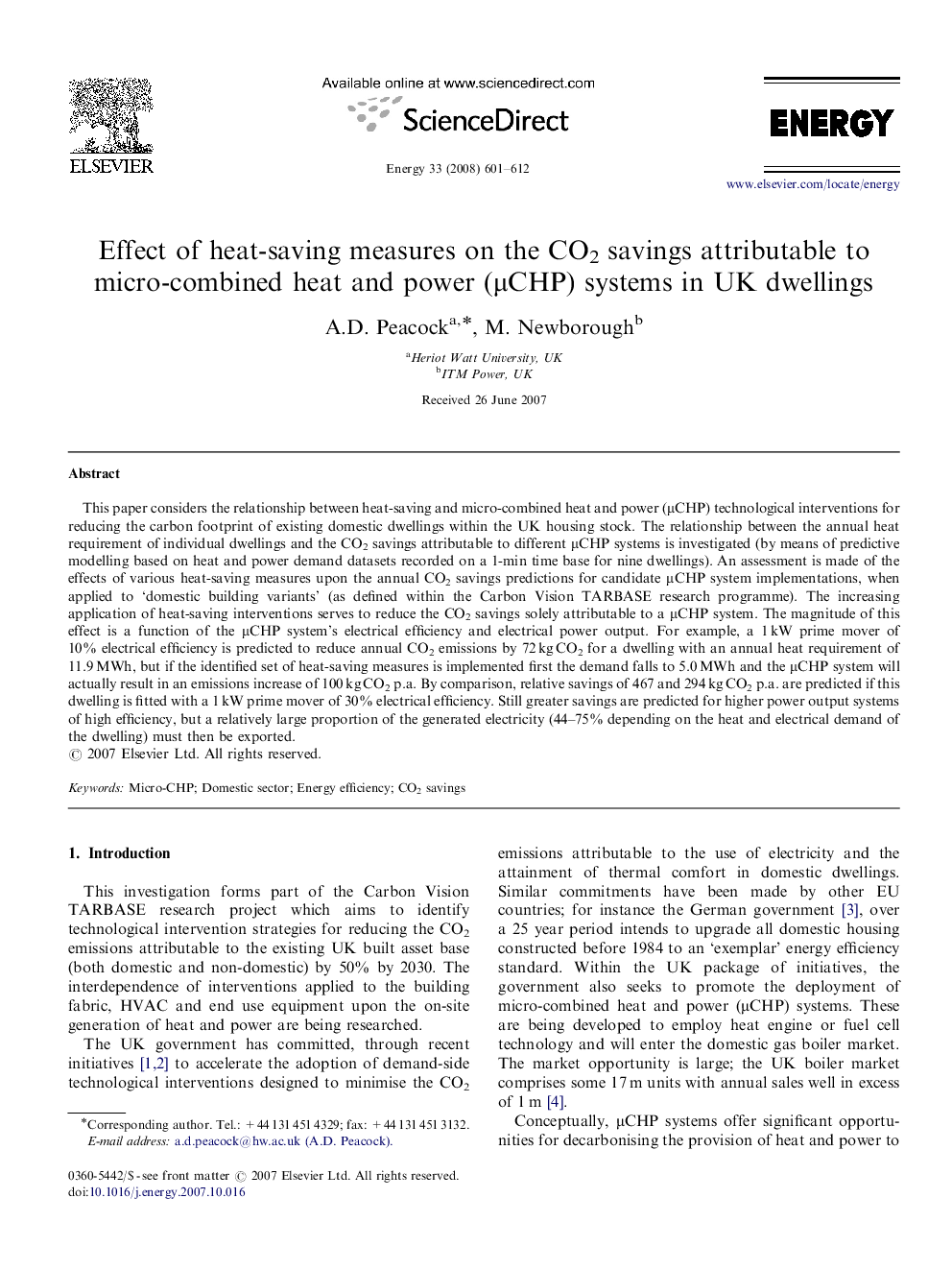| کد مقاله | کد نشریه | سال انتشار | مقاله انگلیسی | نسخه تمام متن |
|---|---|---|---|---|
| 1735713 | 1016189 | 2008 | 12 صفحه PDF | دانلود رایگان |

This paper considers the relationship between heat-saving and micro-combined heat and power (μCHP) technological interventions for reducing the carbon footprint of existing domestic dwellings within the UK housing stock. The relationship between the annual heat requirement of individual dwellings and the CO2 savings attributable to different μCHP systems is investigated (by means of predictive modelling based on heat and power demand datasets recorded on a 1-min time base for nine dwellings). An assessment is made of the effects of various heat-saving measures upon the annual CO2 savings predictions for candidate μCHP system implementations, when applied to ‘domestic building variants’ (as defined within the Carbon Vision TARBASE research programme). The increasing application of heat-saving interventions serves to reduce the CO2 savings solely attributable to a μCHP system. The magnitude of this effect is a function of the μCHP system's electrical efficiency and electrical power output. For example, a 1 kW prime mover of 10% electrical efficiency is predicted to reduce annual CO2 emissions by 72 kg CO2 for a dwelling with an annual heat requirement of 11.9 MWh, but if the identified set of heat-saving measures is implemented first the demand falls to 5.0 MWh and the μCHP system will actually result in an emissions increase of 100 kg CO2 p.a. By comparison, relative savings of 467 and 294 kg CO2 p.a. are predicted if this dwelling is fitted with a 1 kW prime mover of 30% electrical efficiency. Still greater savings are predicted for higher power output systems of high efficiency, but a relatively large proportion of the generated electricity (44–75% depending on the heat and electrical demand of the dwelling) must then be exported.
Journal: Energy - Volume 33, Issue 4, April 2008, Pages 601–612